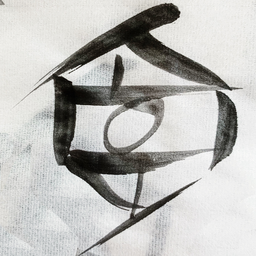Get Jigae With It

I really like Korean food. I didn’t always, but as an adult I’ve learned to appreciate the food of my people. From the rich, briney stews to the sweet, unctuous grilled meats, to the bright funky bite of kimchi. The bubbling, volcanically hot, bright red stews in stone pots, stuffed to overflowing with tofu, peppers, clams, and other hidden treasures never fails to warm the heart and soul.
At some point, I decided to learn how to cook this food I loved so much. I’m still a neophyte (and if you want to learn yourself, go follow Maangchi on YouTube or buy her cookbooks). Here’s the thing that surprised me: almost every recipe includes a sweetening agent. So many dishes have asian pear pureed in, or honey added, or sugar. Things I thought of as purely hot, or purely meaty, have a strong note of sweetness I recognized but never considered. There’s more range in the ingredients that go into a single Korean dish than in most western cooking. Hot pepper flakes, fermented miso, asian pear, honey, fried and smashed anchovies, kelp stock. These are the building blocks of Korean flavors.
I realized the goal of so much of Korean food, is to deliver complexity in every bite. Each bite reaches for so many things: spicy, sweet, bitter, sour, that undefinable richness of umami. And not just in flavor, texturally, the tenderness of tofu, the grainy striations of a thin slice of beef, crisp scallions, rich warm broth. The goal is to deliver every flavor at once, all working in a beauteous symphony. An explosion of flavor and texture that is at once an assault and a homecoming.
Here’s where I’m going to get in trouble. I don’t like Italian food. I think it’s boring. Well, not all of it, but pasta dishes in particular. I think about an Olive Garden sized bowl of gluey pasta all worked through with the same sauce. An unending drudge through a valley of sameness. Even when considering the finest pasta dishes I’ve had Del Posto, Babbo, Luce (that tiny Italian restaurant on Burnside in East Portland that puts them all to shame): the first bite of a great dish is glorious, the rush of carbs, the richness of the parm, the earthy warmth of a great bolognese. But by the seventh I just want it to be over.
To my mind, much of western cooking is about an exploration of a single concept. How do we make this thing taste like more of itself? How do we isolate, celebrate, and display the flavor of this thing. And these are worthy goals, but they require delivering sameness, or require effort on the part of the diner to mix a bite of steak, a bite of salad, a bite of potato. Discrete elements plated to create a whole rather than striving to deliver variation within a single dish.
Don’t @ me.
I think about this a lot these days when I’m reading. A book is a rich experience and the mistake I so often see is a strict adherence to a single tonal element. Well, some people like this, but not me. I think horror and revulsion lands harder if you also laugh sometimes. If you want to ruin someone’s day, give them a moment of sweetness and joy before you show them the crushing emotional collapse. If you want to make someone feel the warmth of new love, show them a life without hope, make them feel the depths of isolation first or during or after. Ideally throughout.
But it’s not just binaries! Books should have scenes that run the full range of human emotions. People make jokes when they’re sad. People laugh to relieve tension when they’re having a fight. People worry if they’re having a good enough time. Anger, sadness, fear, anxiety, all of these are present in us from moment to moment. Let them rise and fall throughout a character’s journey. Show us the depths of their emotions by showing us the range of their feeling.
I talk a lot about how Bong Joon Ho’s The Host is one of my favorite movies. This seems like an odd choice to a lot of people. It has its fans but it’s not held up as a paragon of cinema very often. The special effects have not aged well. The creature design is frankly muddled to begin with. The pacing, to many, is odd and off-beat. And the climactic scenes make no real sense for all their visual glory.
But, the reason it resonates with me so well is it does so many things in its run time, often shuttling from emotion to emotion in a single moment. I think a lot about the family howling with grief in front of the portrait of their missing daughter. A heartfelt, heartbreaking scene that descends into farce and comedy as the family thrashes around on the floor in a giant tangle of limbs and tears. We are presented with a naked, unvarnished portrait of grief and all we can do is laugh.
Humor, family drama, grief, and terror are all presented in a undifferentiated melange in almost every scene of the movie. The nominal hero, Park Gang Doo, is an idiot played for laughs but the incredible performance by frequent Bong collaborator, Song Kang-Ho, invests the role with so much pathos. The movie takes Gang Doo’s grief and fear and desire to be a better father with an incredible seriousness which invests what is often a silly movie with a depth of feeling that never fails to move me to tears.
The sheer terror and regret on his face when he realizes he’s holding the wrong child’s hand as the monster charges through the park on the banks of the Han River is a testament to the power of showing us the range inherent in the complex human that is Gang Doo. We’ve seen him be funny, stealing the legs off a fried cuttlefish, heroic, helping an American GI attack the monster, and the moment when he loses his daughter is one of comedic silliness played for the terrifying tragedy it is.
Each of the characters gets a similar journey. By turns pathetic, heroes, comedically stupid, cunning and brilliant. Each sibling gets moments of failing to overcome their neuroses, succeeding against all odds, or just lashing out in anger and frustration at their loved ones. It’s a beautiful film about how families tear at each other even in moments of crisis, even in the face of an obvious, profound love and affection, and how they can still come together to overcome and survive in the face of unfathomable tragedy.
Much of Chinese cooking venerates the concept of the five flavors, sweet, sour, bitter, salty, and spicy. There’s more than those five that make a difference to my way of thinking: funkiness from fermentation, richness from fats, textures like crunch and soft tender bits, earthy sweetness of rice and grains. I like all foods, all cuisines, but Korean and Chinese are the ones I hold closest to my heart.
Write like Koreans eat. Give me more. I want maximalist fiction. I want books to strive for more. To show me characters that feel things. To show me a world that has a richness of texture, a depth of view. Populate your book with characters with the conflicting, contradictory, compulsive thoughts, feelings, and actions of the people we know in the world.
Nourish us with the fullness of experience.
